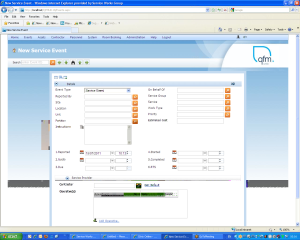Now I can officially say that G2M4 is essentially reverse engineered. It indeed uses zlib-compressed image for sharp details (it’s called “synthetic layer” internally) and JPEG compression for smooth detail (it’s called “natural layer” internally). The only catch — it’s not plain JPEG coding, it codes only some block with JPEG and uses a special way to restore a sparse image.
The idea of this J-BKoding (not the same as J-BKoder in Go2Coven!) is simple: only the blocks referenced from top layer are coded and to save space and improve compression they are coded continuously. So how you know how to restore the picture back? Easy! JPEG data is preceeded by number of macroblocks coded and flags (in bytes, LSB first) telling whether the block is decoded one or skipped. I suspect that something similar might be true for the previous versions of the codec too, because quite often decoded JPEG data showed that its width is less than expected.
Here’s the output of the previous version with synthetic layer only (demonstrated at FOSDEM to the close circle of trolled people):
New version (quick hack):
Now any VideoLAN guy should be able to implement a decoder for it.

